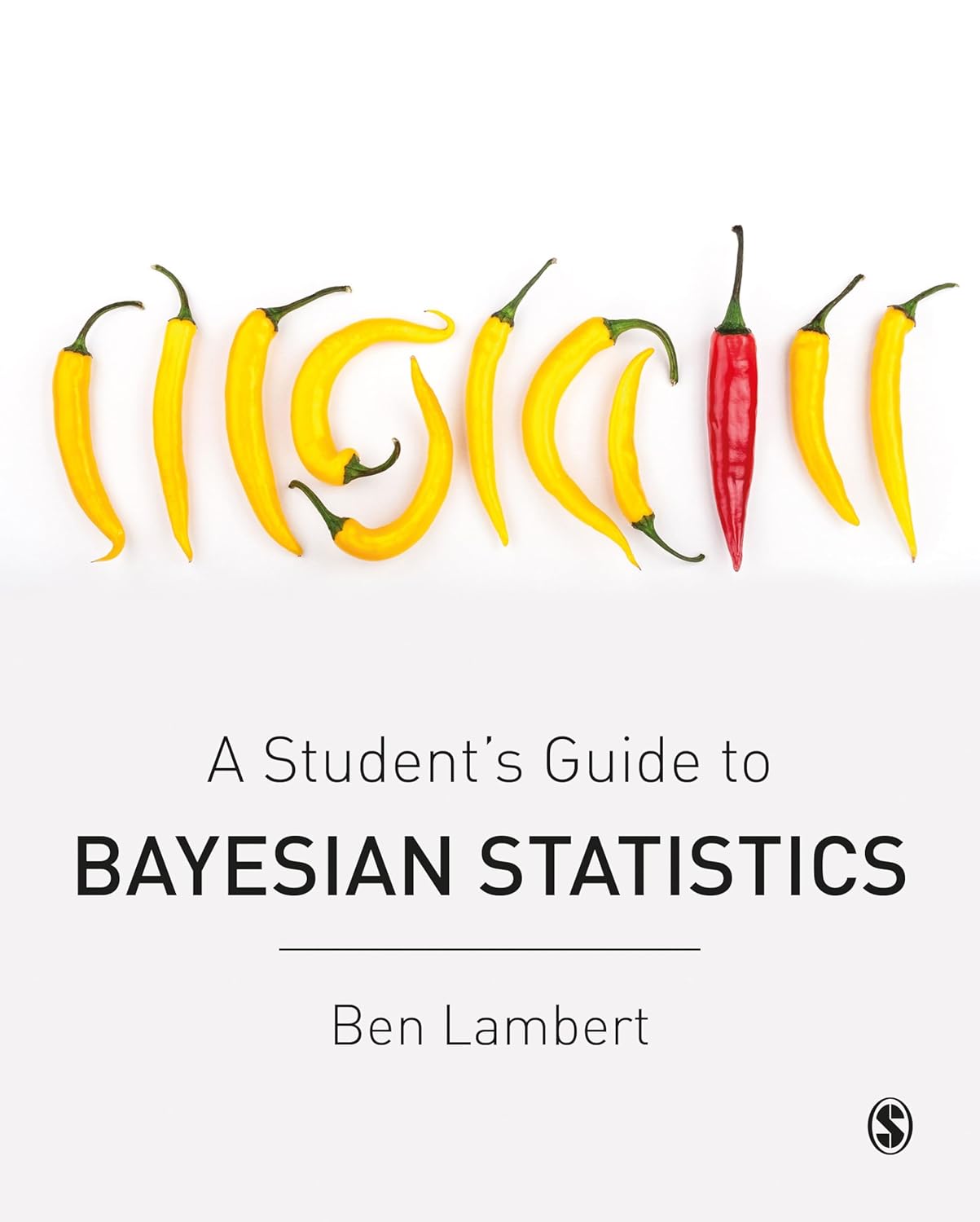Archive for cross validated
Xuriouser & Xuriouser
Posted in Books, Statistics with tags accept, Bayesian computational methods, cross validated, Metropolis-Hastings algorithms, Monte Carlo Statistical Methods, normalising constant, principle of proportionality, screenshot, simulation on May 8, 2024 by xi'anbiXarre, biXarre
Posted in Books, Statistics with tags completion, cross validated, GARCH model, Gibbs sampler, latent data, Metropolis-Hastings algorithm on May 2, 2024 by xi'anjoint fiddlin
Posted in Books, Kids, R, Statistics with tags cross validated, joint distribution, Markov chain, mathematical puzzle, riddle, The Fiddler on April 22, 2024 by xi'an
Flip a fair coin 100 times, resulting in a sequence of heads (H) and tails (T). For each HH in the sequence, Alice gets a point; for each HT, Bob does, so e.g. for the subsequence THHHT Alice gets 2 points and Bob gets 1 point. Who is most likely to win?
An interesting conundrum in that the joint distribution of (A,B) need be considered for showing that Bob is more likely. Indeed, looking at the marginals does not help since the probability of the base events is the same. A solution on X validated (for a question posted when the Fiddler’s puzzle came out, Friday morn) demonstrates via a four state Markov chain representation the result (obvious from a quick simulation) that Alice wins 45% of the time while Bob wins 48%. The intuition is that, each time Alice wins at least a point, Bob gets an extra point at the end of the sequence (except possibly at the stopping time t=100), while in other cases Alice and Bob have the same probability to win one point.
terrible graph and chilies [not a book review]
Posted in Books, Kids, pictures, Statistics, University life with tags bad graph, Bayesian statistics, Bayesian textbook, chili pepper, cross validated, probability density, teaching statistics on January 29, 2024 by xi'an A question on X validated led me to this Bayesian book with a chill cover (except that it first made me seek a word from the chili sequence!), because of a graph within that confused the OP for that question. Here is the graph:
A question on X validated led me to this Bayesian book with a chill cover (except that it first made me seek a word from the chili sequence!), because of a graph within that confused the OP for that question. Here is the graph:
 It represents three *prior* densities at once, namely the (uniform) prior density of a Binomial probability θ, the prior density of its transform θ², and the prior density of the other transform θ¹⁰. Which makes no sense since the first axis is indexed simultaneously by values of the three random variables. Meaning a particular index like 0.4 corresponds to three values of θ, namely θ=0.4 and θ²=0.4 and θ¹⁰=0.4… In other words, the “probability of event occurring, f(θ), corresponds to *three different* events and *three different* f’s. Another needless confusion is that the red and dashed density curves appeared as everywhere above one another, which is impossible since they both are probability densities. And the boxed legend does not help
It represents three *prior* densities at once, namely the (uniform) prior density of a Binomial probability θ, the prior density of its transform θ², and the prior density of the other transform θ¹⁰. Which makes no sense since the first axis is indexed simultaneously by values of the three random variables. Meaning a particular index like 0.4 corresponds to three values of θ, namely θ=0.4 and θ²=0.4 and θ¹⁰=0.4… In other words, the “probability of event occurring, f(θ), corresponds to *three different* events and *three different* f’s. Another needless confusion is that the red and dashed density curves appeared as everywhere above one another, which is impossible since they both are probability densities. And the boxed legend does not help
simulating Gumbel’s bivariate exponential distribution
Posted in Books, Kids, R, Statistics with tags accept-reject algorithm, cross validated, Emil Julius Gumbel, exponential distribution, gamma distribution, Gumbel distribution, Happy New Year, importance sampling, numerical integration, simulating copulas, variance reduction on January 14, 2024 by xi'an A challenge interesting enough for a sunny New Year morn, found on X validated, namely the simulation of a bivariate exponential distribution proposed by Gumbel in 1960, with density over the positive quadrant in IR²
A challenge interesting enough for a sunny New Year morn, found on X validated, namely the simulation of a bivariate exponential distribution proposed by Gumbel in 1960, with density over the positive quadrant in IR²
Although there exists a direct approach based on the fact that the marginals are Exponential distributions and the conditionals signed mixtures of Gamma distributions, an accept-reject algorithm is also available for the pair, with a dominating density representing a genuine mixture of four Gammas, when omitting the X product in the exponential and the negative r in the first term. The efficiency of this accept-reject algorithm is high for r small. However, and in more direct connection with the original question, using this approach to integrate the function equal to the product of the pair, as considered in the original paper of Gumbel, is much less efficient than seeking a quasi-optimal importance function, since this importance function is yet another mixture of four Gammas that produces a much reduced variance at a cheaper cost!

